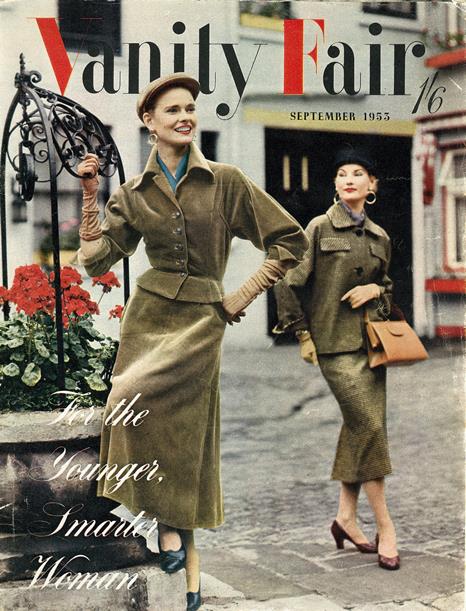In the late forties, Hollywood films were still a great source of fashion inspiration for the world's women. In 1947 Fashion, a Sydney-based publication, offered its readers sewing patterns to make fashions as worn by their favourite movie stars.
I must admit I'm a bit puzzled as to the source of these patterns as the magazine doesn't tell us. Were they authentic patterns for the garments in question, or patterns for clothes resembling the ones worn by the stars? The studios were generous in handing out publicity stills of their stars and starlets, but would they make a deal regarding patterns with an obscure Australian publication? Or did Fashion make an arrangement with one of the pattern manufacturers authorised to make Hollywood copies?
"COCKTAIL SUIT of heavy black satin (New York's current love for cocktail wear). The deep pocket flaps give a peplum effect... the sleeves are bracelet length... the top a collarless edge-to-edge line. Eve Arden, of Warner Bros.' Mildred Pierce, wears it."
(Re-reading this caption I'm not sure whether it's saying Eve Arden wore this suit in Mildred Pierce, or Eve Arden wears this suit and she was in Mildred Pierce. If it was worn in the film, Milo Anderson was the designer.)
"TWO-PIECE BLACK, with a one-piece look! The slim skirt is topped by a diagonally draped blouse. The surplice front closing ends in a short drape, caught at the waist by a jeweled and embroidered buckle. Warner's star, Jane Wyman, wears it in Cheyanne."
Oops! This one looks like a mistake. Cheyanne was a Western, and the cast didn't wear contemporary dress. The designer for Cheyanne was Milo Anderson, but I don't know who designed this dress.
"This white crepe blouse is a highly styled adaption of the tailored shirt. Voluminous sleeves and shirring from the yoke cut a swagger over a dark shirt. Ingrid Bergman wears this one in the RKO film, "Notorious"."
Here's a star—and a film—from the "A" list. Cary Grant co-starred and Hitchcock directed. The costume designer was Edith Head.
"Eye-compelling gown of starchy white pique (just as lovely in taffeta). The slim skirt is slit to the knees; the bouffant peplum is removeable, and makes for versatility. Paramount starlet, Audrey Young, designed this dress, and wears it in Trouble With Women."
From A List to unknown... though Audrey Young appeared to have a knack for design. She later married Billy Wilder and acted as costume consultant on his films Some Like It Hot and The Apartment.















